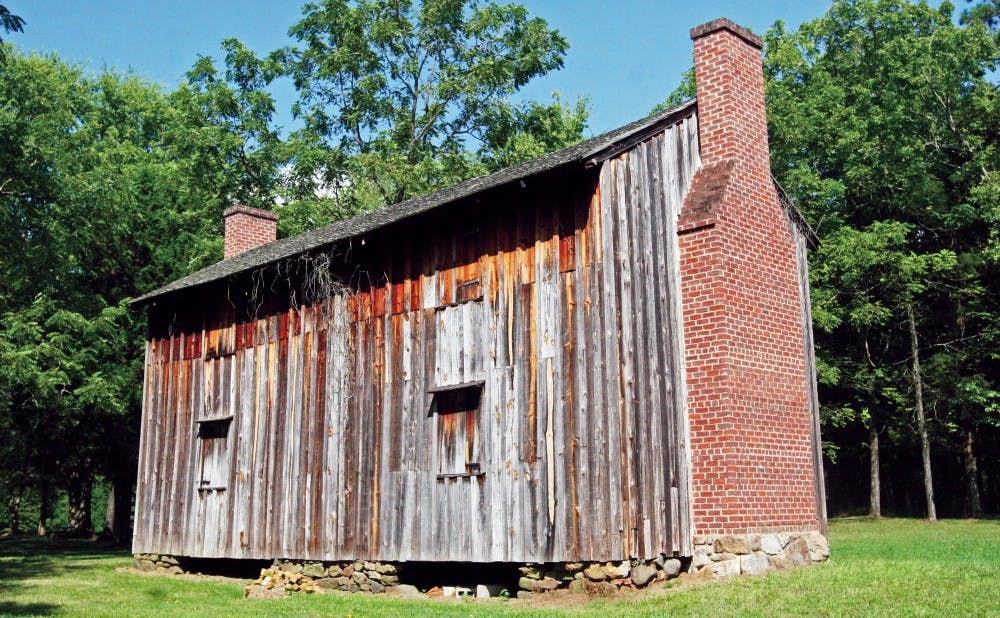A recent award recognizes the state's efforts to promote tourism, citing the Triangle Area as a major draw for visitors.
The North Carolina Division of Tourism, Film and Sports Development won the Mercury Award for Print Advertising this month. The award-winning ad notes the attractions of the Triangle,among other areas, and the state's famous restaurant and music scenes. The ad was published in national magazines such as Better Homes & Gardens, Southern Living and O, the Oprah magazine.
On a more local level, Durham residents say the city has flourished in the past decade, and members of the Duke community say they have enjoyed the increased amount of culture and fine dining in Durham.
University Archivist Valerie Gillispie has lived in Durham since 2002. Back then, she said, Durham was a fairly quiet city at night, but has dramatically changed in the past decade with the increase in nightlife.
Sophomore Susannah Roberson, a Durham native, also said the city has become more vibrant with its cultural offerings in dining and the arts.
“Downtown [Durham] used to be deserted and not really safe to go to alone, but now it’s really thriving," she noted. "Every time I go there, there’s something new.”
Roberson explained that Durham natives are really passionate about the city and took initiative to make the city more appealing to visitors. Since the improvements, Durham has been nominated for tourist awards and recognition.
For example, in 2011, The New York Times named Durham among the 41 places to visit in the world.
Southern Living named Durham the "Tastiest Town" in the South this year.
Gillispie said the Durham Convention and Visitors Bureau can take credit for the positive attention and increased tourism that the city has garnered. The bureau has promoted various attractions such as public performances, restaurants and museums such as the Nasher Museum of Art and the Museum of Life and Science.
The Durham Performing Arts Center has also been a magnet for theater and arts enthusiasts, Gillispie added. Major musicals, such as "Book of Mormon," continue to have shows at the venue.
Shelly Green, president and CEO of the DCVB, said the number of visitors is steadily increasing. The increase has been larger for leisure travel than business travel, though both have increased.
Spending by visitors to Durham has nearly tripled in the 20 years the bureau has kept data. According to the numbers collected by DCVB, visitor spending in Durham was $842.2 million.
Green believes that it is not one major aspect of Durham but rather many different aspects of the city that draw people in.
Green said the DCVB works cooperatively with the state tourism division and in 2011, state officials put Durham on the cover of the state travel guide.
Roberson added that Durham might factor into some students’ decisions to come to Duke.
“Since Duke students hang out in Durham all the time, it adds to Duke’s appeal,” she noted.
Duke can also draw people to Durham, Roberson added, noting that the Gothic architecture of West Campus and the Georgian style of East Campus both attract visitors to the area.
Roberson said that besides the famous Duke Chapel and the Sarah P. Duke Gardens, Cameron Indoor Stadium and K-ville attract visitors to Duke who are basketball fans.
Sophomore Andrea Ruby noted that the Duke Lemur Center consistently draws visitors from outside the University.
Off campus, she said that the Durham Farmer’s Market on Saturday is a very fun and “Durham-y place” to check out.
Gillipsie added that Durham’s main historical attractions off campus include Historic Stagville and the Duke Homestead, which are both state historical sites.
According to its website, Historic Stagville is the site of the remains of North Carolina’s largest pre-Civil War plantation, among the largest former plantations in the South.
The Duke Homestead is a former tobacco factory where Washington Duke first grew and processed tobacco. Both of these historic attractions are popular with tourists visiting Durham.
But Ruby, who is from Greensboro, said the coastal regions and the mountains are likely a stronger draw for tourists than Durham or the Triangle region. People from the Triangle sometimes overestimate the appeal of the area to leisure tourists, especially to those from other parts of the state, she said.
"To Northeast people, Duke is a lot more prevalent but a lot of North Carolinians are Carolina fans," she said. "The way we perceive Durham and Duke is a lot different than [how people from the North do]."
Get The Chronicle straight to your inbox
Signup for our weekly newsletter. Cancel at any time.

